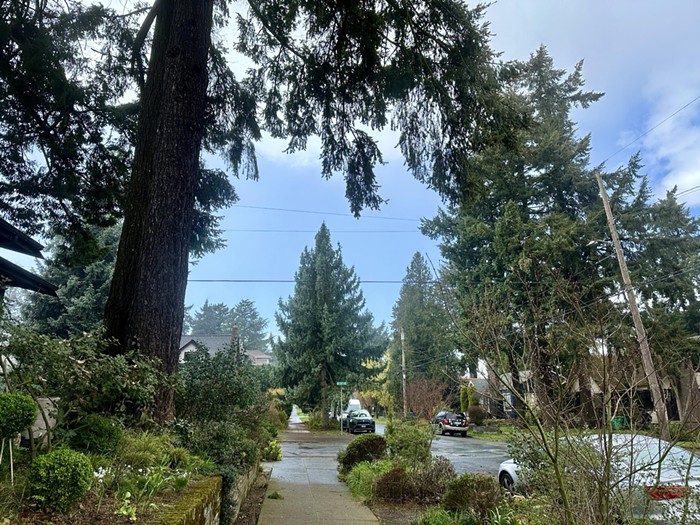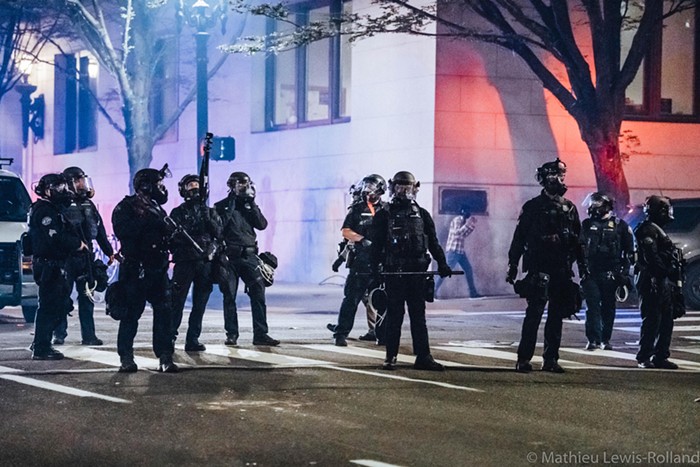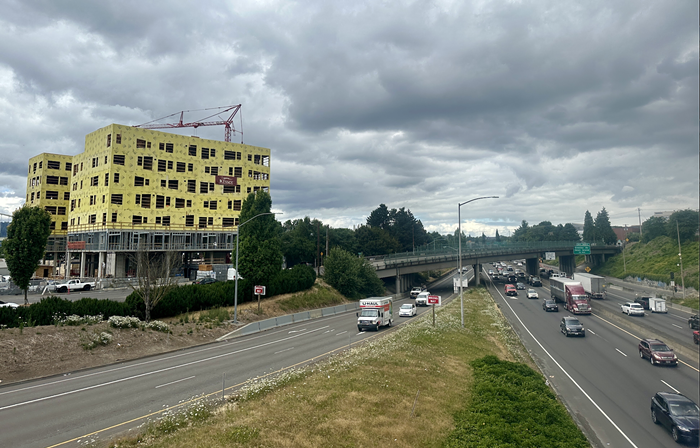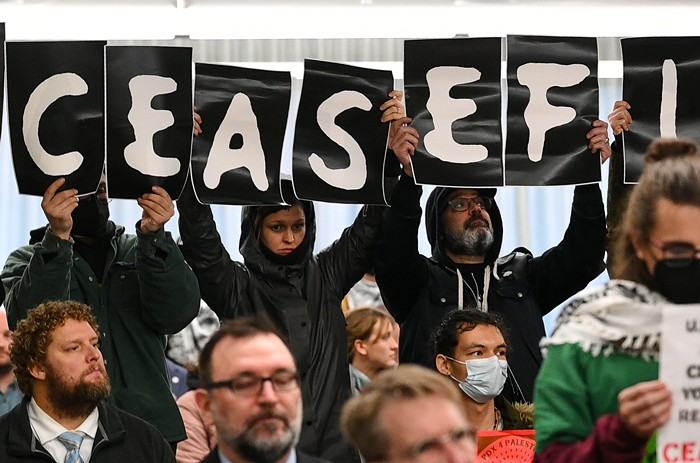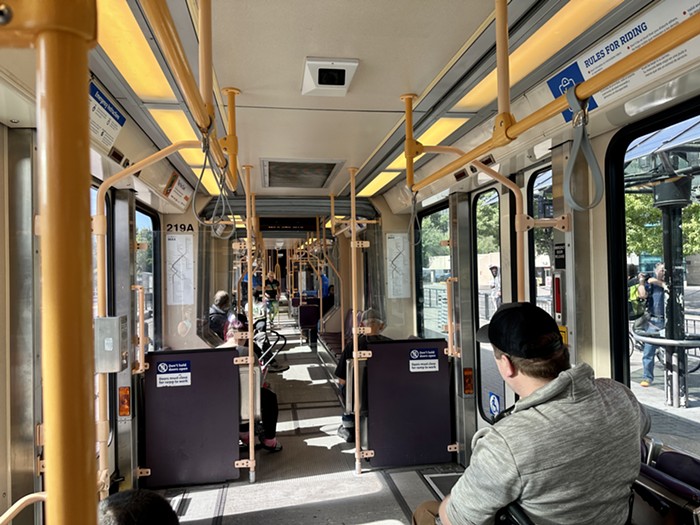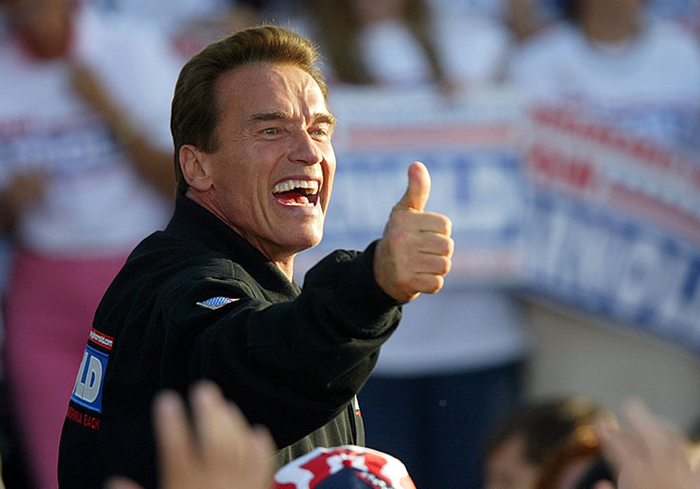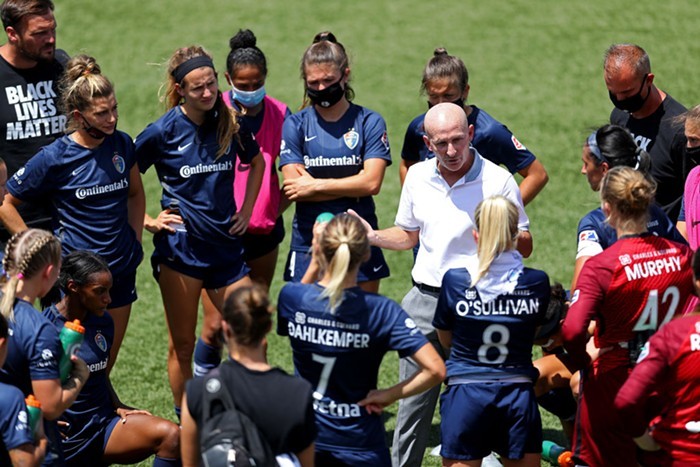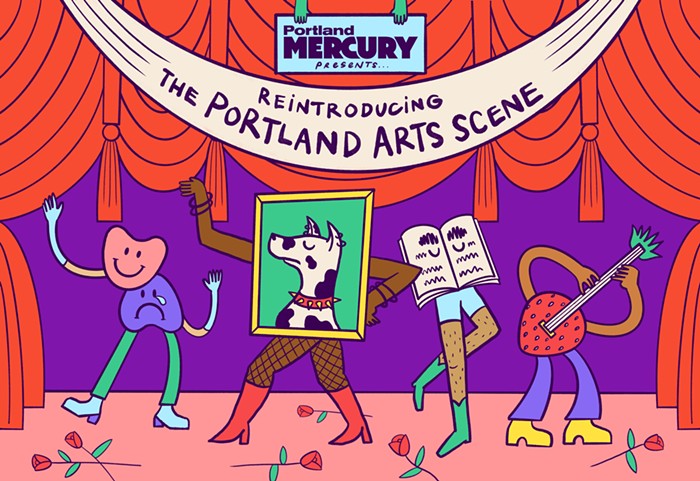"By marching with our feet we will send a strong message," boomed Lewis. "Don't give up," he added, implicitly referring to a rising tide of frustration. Increasingly, anti-war protesters are recognizing that, against the headstrong Bush administration, peaceful demonstrations are futile.
But even though Lewis buoyed the crowd with optimism, a dark undercurrent is beginning to surface. It is the same trend Lewis witnessed in the '60s, as civil rights leaders like Huey P. Newton and Malcolm X, frustrated with the stubborn pace of change, moved towards violent methods.
Standing in the shadow of the Morrison Bridge directly behind the stage where Lewis was speaking, one protester explained, "I reached a tipping point a long time ago." With bulky blond dreadlocks, the young protester wore an "Earth First!" shirt with "violence breeds violence" scrawled in black pen across the back.
"Yes, I think we need massive civil disobedience," he said. "People should start by taking one more step--if they are marching, then they should start sending the president postcards. And," he concluded with an elusive nod towards some unspecified, but certainly volatile action, "it should go further."
On Saturday an estimated 30,000 residents filled downtown. Exactly a month earlier, six million people worldwide had taken part in similar demonstrations. At that time, Bush dismissed demonstrators as a "mere focus group." On Sunday, after the latest round of demonstrations, Bush refused to acknowledge they happened.
As the crowd began to move away from the main stage and snake along Front Avenue, a man with a salt-and-pepper beard handed out fliers. "Interested in civil disobedience?" he propositioned. A week earlier, that same man had been arrested with six other activists after staging a sit-in at the Portland federal building.
"I get tired of demos," he says flatly. "I mean, it's a nice party, but really." Saturday, this group will host a seminar on civil resistance methods. (Augustana Church, 2710 NE 14th, noon-4 pm, for more information: "rawc@ziplip.com").
A MIRROR OF THE '60s
As thousands finished the march along the Waterfront, they were greeted by three barefoot teenage girls sitting in a tree like monkeys. Repeating the John Lennon refrain, they chanted, "All we are saying, is give peace a chance." Marchers carried rainbow-colored signs and flashed peace signs. Like most anti-war demonstrations since the mid-'60s, these are familiar images, as if they were the blueprint for successfully shutting down a war.
Yet in spite of nostalgia, most political scientists agree that peaceful anti-war marches did not deter foreign policy in Vietnam. At the height of public disapproval for the war, and as protesters flooded the Washington Mall, President Nixon intensified bombing runs in Southeast Asia. By the time a peace accord with Ho Chi Minh was signed in 1973, student protests had ebbed. In fact, they virtually halted three years earlier, in 1970, after four students were shot by National Guardsmen at Kent State University. Students were protesting the presence of ROTC at their campus.
"I would suggest that nearly all major U.S. social and political movements have progressed only from a mixture of tactics that included violence," says Craig Rosebraugh, the former spokesperson for Earth Liberation Front, "In the civil rights movement," he points out, "the violent components of the Black Power contingence made nonviolent leaders appear that much more favorable to work with."
Rosebraugh goes on to talk about the labor movement during the late 19th Century, which was marked by the bombings of company executives' homes and labor strikes where pro-union workers bloodied those who crossed picket lines. Ultimately, this bullying secured collective bargaining and eight-hour workdays.
Likewise, in spite of popular flower-power images, the anti-war movement in the '60s had a dark and violent undercurrent. In 1970, for example, four students from the University of Wisconsin destroyed an army research center housed in the basement of a campus building after they exploded a pick-up truck piled with gasoline-soaked fertilizer. The explosion accidentally killed a professor who was an anti-war activist. But it also demolished a major site for weapons design.
Already, even before a war in Iraq has begun, contemporary demonstrations dwarf most anti-Vietnam War protests--both in numbers and diversity. Yet, says Rosebraugh, the protests continue to implore the same peaceful tactics from the Vietnam War era, and repeat the same shortcomings.
"One unsurpassable requirement for nonviolent activity to be successful is the presence of a healthy and working conscience in the opponent," explains Rosebraugh. "Nonviolent philosophy dictates that the oppressor must be able to see the evils in his or her own actions and voluntarily change. They are supposed to be able to be weaned from error by patience and sympathy."
But, believes Rosebraugh, this kind of optimism is foolhardy. Already, Bush has been more public and more direct about his dismissal of protesters than any other sitting president during a war. "To believe the current anti-war movement will have any chance of stopping the U.S.-led war on Iraq is ignorant and a definite sign we are not learning from our historical mistakes," Rosebraugh adds.
Recognizing that peaceful demonstrations are not impacting Bush's hawkish policies, a smattering of anti-war activists have already turned to more intrusive means. And, say activists, frustration is percolating.
Reporting from protests in New York City, Starhawk, author of Notes from the Global Uprising, explained there's a thin line between peaceful protest and violent clashes. After police refused to issue permits for a march, tens of thousands of protesters still flooded Central Park. Police set up barricades to hold demonstrators back, but many joined the bootleg march, finding paths through back alleys and apartment buildings.
"And if violence had broken out," Starhawk explained, "it wouldn't have come from militants or anarchists. It would have most likely come from a few ordinary people pushed one foot too far, who simply lost their tempers and lashed out."
IS VIOLENCE THE ANSWER?
"As U.S. citizens, we are constantly told that we have the right and even the obligation to engage in social and political change," explains Rosebraugh, "but there are correct ways of going about it."
Not only has the Bush administration tuned out demonstrations, many conservative politicians have pushed to criminalize political dissent. In Oregon, Representative John Minnis is pushing a bill that would expand the definition of "terrorism" to include any action that interferes with governmental business or normal commerce.
But most activists agree that such aggressive policing only strengthens their resolve and furthers their urgency to bring about social and political change.
"The real question that perhaps needs to be asked," says Rosebraugh, "is has there been a successful social or political movement in this country where violence did not indeed play at least some crucial part?"
